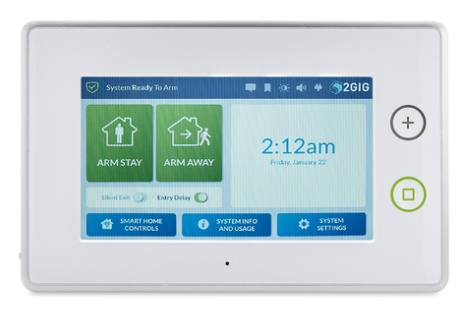Important 2GIG GC3 and GC3e Battery Replacement Notice!
Posted By Fred DanielsThe maker of the 2GIG GC3 and GC3e recommends that all users with a panel approaching 3 years of age replace the backup battery. Initially, the expected battery life was between three and five years. With the recent notice Nice, 2GIG's parent company is now suggesting a battery replacement ahead of schedule.

Apparently, swelling has been observed in some of these panels' lithium-polymer batteries. The manufacturer notes that some minor swelling is normal, but based on the notice it sounds like some batteries may be swelling beyond what is normal.

Once you open up the GC3/GC3 panel to access the battery, Nice is also warning not to puncture the battery upon removal. Do not use any type of sharp object to remove the battery. Puncturing the battery could allow dangerous chemicals to spill from the casing. Once the battery is removed, please follow local guidelines with regard to the proper disposal of lithium-ion batteries.
It is also recommended in this notice to do a firmware upgrade of your 2GIG GC3 or GC3e alarm panel at the time you replace the battery. The latest revision for these panels is 3.2.6.6770.
Reading through the firmware release notes, it does mention that the latest firmware update includes the addition of battery testing, and conditioning, as well as a status indicator for battery replacement. So, we will double down on the advice to update your panel's firmware. This revision also includes compliance with UL 985 edition 6. This standard requires that the panel recognize batteries that can no longer provide battery backup for at least 5 minutes worth of alarm signaling. When the panel recognizes that the battery lacks this capacity, it will alert the user of a low battery and the battery should be replaced at that time.
The 2GIG GC3 and GC3e use the same firmware beginning with revision 3.2.3. If you already have revision 3.2.1 or higher, then you can find all updates on the GC3e firmware update page. Older revisions may require a stepped approach to upgrading and cannot be updated all-at-once. You can find the older firmware versions on the GC3 firmware update page.
You must update to the base build of each revision, and then you can skip to the latest build of that revision. The base of each version is 3.0.x then 3.1.x, then 3.2.x. If you have an earlier revision and attempt to update directly to 3.2.1, your panel will very likely be damaged and will have to be replaced. Updating over the air using Alarm.com can help with this process, as their server should only allow you to update in the proper order.
GC3/GC3e firmware updates can be sent by your alarm dealer. When the update can be sent using WIFI at the panel, there is usually no charge, though different dealers may have different policies on this. An upgrade that has to be sent using cellular data will incur a fee, which will likely be passed onto the user by the dealer. Alarm Grid always passes these fees along with no markup. We recommend that you update using the USB port at the top of the panel. We have written detailed instructions on updating the firmware using the USB port to make this process easier to accomplish.

If your panel is approaching or past the 3-year mark, it is best to be proactive and purchase your new GC3/GC3e battery today. Then make sure to install the latest firmware, as recommended.








